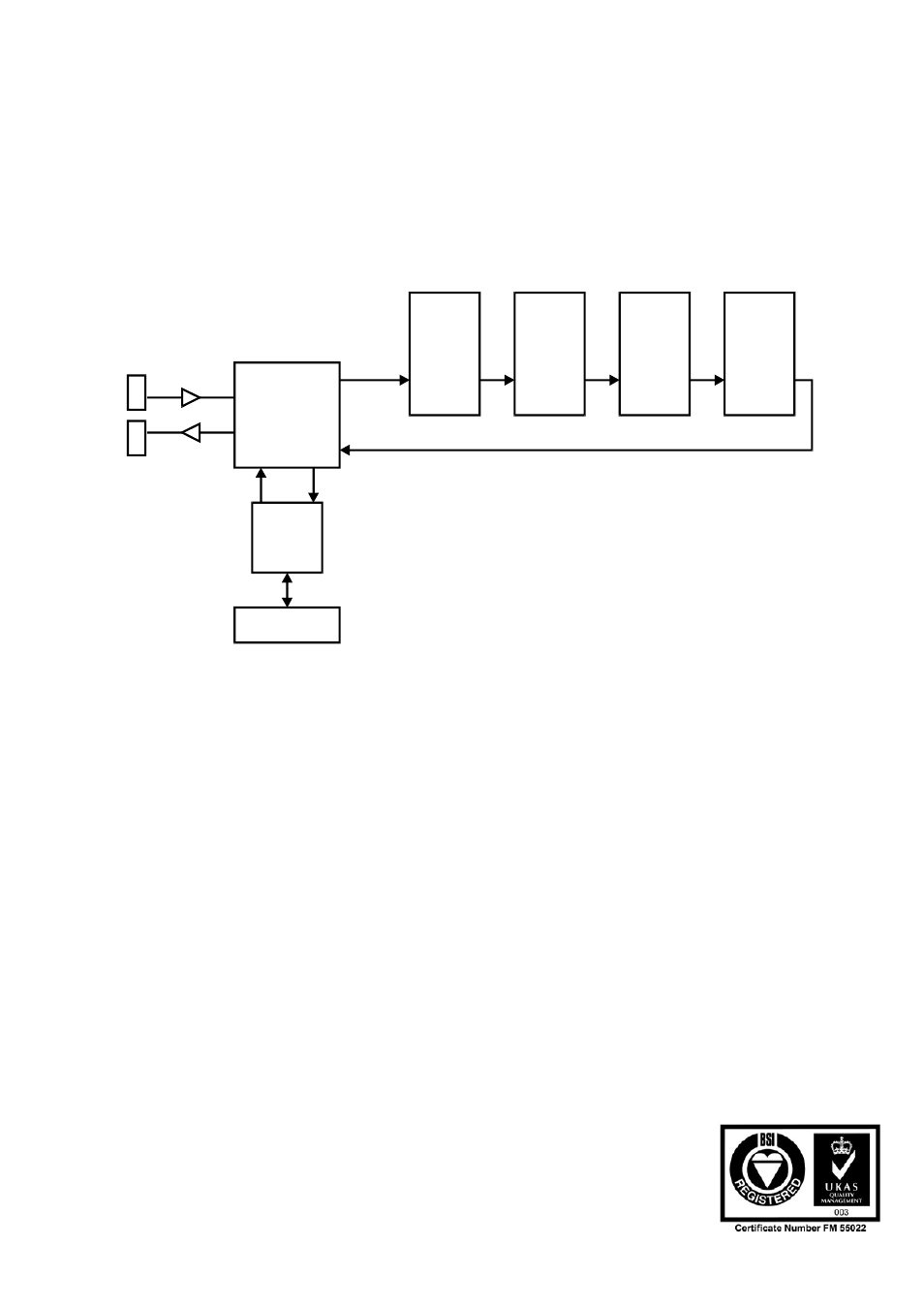10 jtag controller – Sundance SMT300Q v.1.6 User Manual
Page 28

User Manual (QCF42); Version 3.0, 8/11/00; © Sundance Multiprocessor Technology Ltd. 1999
10 JTAG Controller
The SMT300Q has an on board Test Bus Controller (TBC), an SN74ACT8990 from
Texas Instruments. The TBC is controlled from the CompactPCI bus giving access to
the on-site TIMs and/or any number of external TIMs. Please refer to the Texas
Instruments data sheet for details of this controller. The TBC is accessed in I/O space
BAR1 offset 0x80.
Test Bus
Switching
Matrix
Test Bus
Controller
PCI bridge
Site 1
Site 2
Site 3
Site 4
Buffers
Buffered
JTAG
Connectors
Figure 5 : TBC Data Routing
The SMT300Q can operate in two TBC modes; Master mode and Slave mode. In
Master mode, the Test Bus Controller on the SMT300Q drives the JTAG scan chain
through the TIM sites on the SMT300Q. If any or all the sites are not populated with a
TIM then the modules SENSE signal is used to enable a tri-state buffer connecting
the TDI and TDO (JTAG Data In and Data Out) on the specific site, maintaining the
integrity of the JTAG data path. This switching is automatic. The SMT300Q auto
detects external JTAG connections and switches the JTAG circuitry accordingly.
When the SMT300Q is configured in Slave mode, the TBC on the SMT300Q is
disabled, as the TBC is assumed to be on another device connected to the
SMT300Q.
The SMT501-JTAG is designed to connect two SMTxxx carrier boards i.e., SMT300Q
controlling an SMT328 VME carrier. The length of SMT501-JTAG is 1 meter.
There are two external JTAG connectors (JTAG IN, JTAG OUT). JTAG OUT is used
when in master mode to connect to slave devices and JTAG IN is used in slave mode
to connect master devices to the SMT300Q. Both connectors can be used at the
same time to produce a chain of boards.
